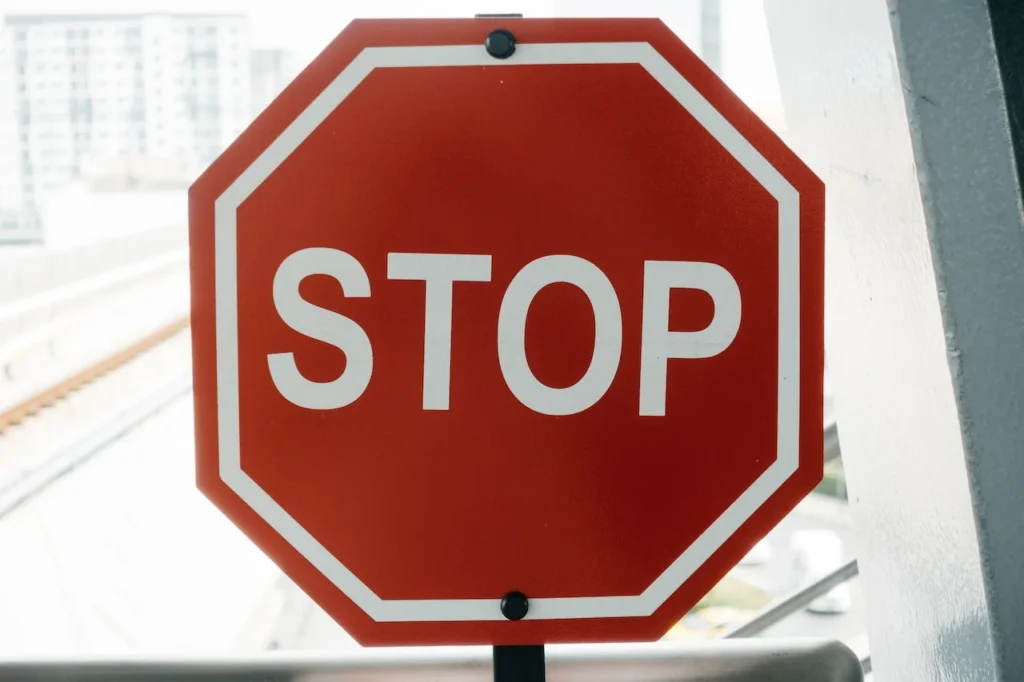Protecting intellectual property (IP) in China requires a nuanced approach that aligns with local laws, business norms, and cultural expectations. One of the first steps in addressing IP infringement is sending a cease-and-desist letter. However, a poorly crafted letter can be ineffective or even harmful to your case.
To maximize the effectiveness of your cease-and-desist letter, it is crucial to avoid common mistakes and take advantage of tools such as professionally crafted and stamped lawyer’s letters. In this article, we outline the best practices for drafting cease-and-desist letters tailored for IP protection in China, including when and how to leverage a lawyer’s letter.
Table of Contents
ToggleAvoid Using a Generic Template
A common pitfall is relying on a standard Western-style cease-and-desist letter or generic template. While such templates may work in other jurisdictions, they fail to address the unique legal and cultural dynamics in China.
Why a Tailored Approach Matters
- Cultural Relevance: Generic letters may overlook critical cultural sensitivities, such as maintaining a respectful tone that avoids causing the recipient to “lose face.”
- Legal Context: Western-style letters often fail to reference Chinese IP laws, which undermines the letter’s credibility.
- Seriousness of Intent: A tailored letter signals professionalism and a strong commitment to protecting your rights, increasing the likelihood of compliance.
Crafting a bespoke letter ensures that your message is legally sound and culturally appropriate, making it harder for the infringer to ignore.
Use a Lawyer’s Letter for Enhanced Impact
For serious cases, sending a lawyer’s letter stamped by a reputable Chinese law firm adds significant weight to your claims. A lawyer’s letter serves as a formal, legally backed communication that incorporates key elements such as case facts, legal basis, and the client’s requests.
Advantages of a Lawyer’s Letter
- Professional Authority: A stamped lawyer’s letter signals that legal action is imminent if the demands are not met.
- Legal Precision: Lawyers experienced in Chinese IP law can frame the case facts and legal basis accurately, eliminating ambiguities or loopholes that the infringer could exploit.
- Facilitates Communication: Chinese companies are more likely to take a lawyer’s letter seriously and respond promptly, as it reflects the sender’s readiness to escalate the matter.
Sending a lawyer’s letter demonstrates that you are well-prepared and have access to professional legal support, making it more difficult for the infringer to dismiss your claims.
Write the Letter in Chinese
One of the most critical aspects of drafting a cease-and-desist letter in China is ensuring that it is written in Chinese, not English.
Why Language Matters
- Clarity: Writing in Chinese ensures the recipient fully understands the allegations and demands, eliminating claims of misunderstanding.
- Legal Standing: A letter written in Chinese can be submitted as evidence in local administrative or judicial proceedings.
- Professionalism: Communicating in the recipient’s native language shows respect and seriousness.
If you are unfamiliar with the language, hire a professional translator or consult with a Chinese IP lawyer to draft the letter.
Cite Relevant Chinese Laws
To strengthen your letter’s credibility, reference specific Chinese IP laws and regulations that the infringer has violated.
Key Laws to Reference
- Trademark Law of the People’s Republic of China: For cases involving unauthorized use of trademarks or counterfeit goods.
- Patent Law of the People’s Republic of China: For patent infringement.
- Copyright Law of the People’s Republic of China: For unauthorized use or distribution of creative works.
Referencing these laws shows familiarity with the local legal system and strengthens your argument.
Include Clear Evidence
A strong cease-and-desist letter should include irrefutable evidence of the infringement. Avoid vague accusations, as these weaken your case.
Types of Evidence
- Photos or Screenshots: Document the infringing products, designs, or content.
- Product Samples: Provide tangible proof of counterfeit goods.
- Sales Records or Links: Highlight online listings, advertisements, or distribution channels.
Providing clear and specific evidence builds a compelling case and leaves little room for denial.
Specify Demands and Deadlines
Your letter should clearly outline what actions you expect the infringer to take and set a firm deadline for compliance.
Key Elements to Include
- Specific Demands: Examples include ceasing production, removing infringing content, or providing a written acknowledgment of compliance.
- Firm Deadline: State an exact date for compliance to create urgency.
- Potential Consequences: Briefly outline the next steps, such as initiating legal action, if the demands are not met.
Providing a clear path forward makes it easier for the infringer to comply and shows your commitment to resolving the issue.
Research the Recipient
Sending the letter to the wrong entity wastes time and undermines the credibility of your case. Conduct thorough research to ensure the letter reaches the appropriate party.
Steps to Verify the Recipient
- Check Business Registration: Use resources like China’s National Enterprise Credit Information Publicity System.
- Identify Responsible Parties: Determine whether the infringer is an individual, subsidiary, or parent company.
- Consult Legal Experts: Local lawyers or investigators can help confirm the recipient’s details.
By addressing the correct party, you increase the likelihood of a prompt response.
Tailor to Chinese Cultural Norms
Cultural sensitivity is essential when drafting a cease-and-desist letter in China. Adopting a tone that aligns with local customs and values can improve the recipient’s response.
Key Cultural Considerations
- Face-Saving: Use respectful language and avoid overly confrontational phrasing.
- Relationship Focus: Emphasize mutual benefits and a collaborative resolution.
- Indirect Communication: Be firm but avoid threats, which may escalate tensions.
Crafting the letter with cultural awareness demonstrates professionalism and increases the likelihood of compliance.
Weigh the Risks
Before sending the letter, carefully evaluate the potential risks:
- Evidence Destruction: The infringer may destroy evidence upon receiving the letter.
- Countersuits: The recipient might respond with counterclaims.
- Escalation: Aggressive language could provoke retaliatory actions.
How to Mitigate Risks
- Gather Evidence First: Ensure you have all necessary documentation before sending the letter.
- Consult Legal Counsel: Work with experienced IP lawyers to draft the letter and assess potential outcomes.
Advantages of Combining Cease-and-Desist with a Lawyer’s Letter
Sending a cease-and-desist letter alongside a stamped lawyer’s letter significantly enhances its impact. A lawyer’s letter provides:
- Case Facts: A clear and concise summary of the infringement and its implications.
- Legal Basis: References to Chinese laws that have been violated.
- Client’s Requests: Well-defined demands for the infringer to resolve the issue.
The combination of these elements ensures that the letter is not only legally sound but also persuasive, increasing the likelihood of compliance.
Next Steps if the Letter is Ignored
If the recipient does not respond or comply, consider escalating the matter:
- Administrative Complaints: File a complaint with Chinese administrative authorities, such as the State Administration for Market Regulation.
- Litigation: Pursue legal action through Chinese courts.
- Enforcement Measures: Engage local enforcement agencies to address the infringement.
Conclusion
Protecting your intellectual property in China requires a thoughtful and well-executed approach. By avoiding common mistakes—such as using generic templates, failing to provide evidence, or neglecting cultural nuances—and leveraging tools like a stamped lawyer’s letter, you can significantly enhance the effectiveness of your cease-and-desist letter.
Key Takeaways
- Tailor the letter to the Chinese legal and cultural context.
- Write in Chinese and include clear evidence of the infringement.
- Cite specific Chinese laws and set firm deadlines.
- Use a lawyer’s letter for added credibility and professionalism.
- Consult experienced legal professionals to craft a persuasive and effective letter.
Taking these steps ensures that your cease-and-desist letter serves as a strong foundation for resolving IP disputes in China and protecting your rights.
FAQ: Avoiding Mistakes and Using Lawyer’s Letters for IP Protection in China
1. Why should I avoid using a generic template for a cease-and-desist letter?
Generic templates fail to address the unique legal and cultural nuances of China. A tailored letter demonstrates your commitment, aligns with local norms, and is more likely to be taken seriously by the infringer.
2. What is a lawyer’s letter, and why should I use one?
A lawyer’s letter is a formal document prepared and stamped by a reputable Chinese law firm. It includes case facts, legal basis, and the client’s requests. It adds authority and professionalism to your demands, increasing the likelihood of compliance.
3. What are the advantages of sending a stamped lawyer’s letter?
- Professional Authority: Signals that legal action is imminent.
- Legal Precision: Ensures accurate presentation of facts and laws.
- Improved Communication: Chinese companies often respond more promptly to a lawyer’s letter.
4. Should I write the cease-and-desist letter in Chinese or English?
The letter should be written in Chinese. This ensures the recipient understands the allegations, eliminates language barriers, and strengthens its credibility in legal proceedings.
5. What laws should I reference in the letter?
You should cite specific Chinese IP laws, such as:
- Trademark Law: For unauthorized use of trademarks or counterfeit goods.
- Patent Law: For patent-related infringements.
- Copyright Law: For unauthorized reproduction or distribution of creative works.
Citing these laws shows your familiarity with the legal framework and strengthens your argument.
6. What evidence should I include?
Include clear and specific evidence, such as:
- Photos or screenshots of counterfeit goods or plagiarized content.
- Product samples to show infringement in physical goods.
- Online listings, sales records, or advertisements.
Concrete evidence builds a strong case and reduces the infringer’s ability to deny the allegations.
7. What should the letter’s demands include?
Your demands should:
- Specify actions the infringer must take (e.g., cease production, remove infringing content).
- Set a firm deadline for compliance.
- Outline potential consequences for non-compliance, such as legal action.
8. How do I ensure the letter reaches the correct recipient?
- Verify the recipient’s details through China’s National Enterprise Credit Information Publicity System.
- Identify the responsible party (e.g., individual, subsidiary, or parent company).
- Consult local legal professionals to ensure accuracy.
9. What cultural considerations should I keep in mind?
- Face-Saving: Avoid overly aggressive language that may cause the recipient to lose face.
- Relationship Focus: Highlight the benefits of resolving the issue amicably.
- Professional Tone: Be firm but respectful to avoid escalating tensions.
10. What are the risks of sending a cease-and-desist letter?
- Destruction of Evidence: The infringer may hide or destroy evidence.
- Countersuits: The recipient may respond with counterclaims.
- Escalation: Aggressive language could provoke retaliation.
11. How can I mitigate these risks?
- Gather sufficient evidence before sending the letter.
- Use a lawyer’s letter to ensure professional and precise communication.
- Consult legal experts to evaluate potential risks and outcomes.
12. Can I include a settlement offer in the letter?
Yes, you can propose a settlement. Frame it as a mutually beneficial solution, aligned with Chinese cultural norms, to increase the likelihood of acceptance.
13. Is a cease-and-desist letter legally binding in China?
No, a cease-and-desist letter is not legally binding. However, it serves as a formal warning and can be used as evidence if the dispute escalates to legal proceedings.
14. What should I do if the infringer ignores the letter?
- File a complaint with Chinese administrative authorities, such as the State Administration for Market Regulation.
- Pursue litigation in Chinese courts.
- Engage local enforcement agencies to take further action.
15. Can I draft the letter myself, or should I hire a professional?
While you can draft the letter yourself, hiring a legal expert with experience in Chinese IP law ensures the letter is accurate, effective, and legally sound.
16. How does a lawyer’s letter differ from a regular cease-and-desist letter?
A lawyer’s letter is prepared by a law firm and includes:
- Detailed case facts.
- Relevant legal basis under Chinese law.
- Specific demands from the client.
The law firm’s stamp adds credibility, making the letter more authoritative.
17. Should I send the letter via email or post?
For formal cases, send the letter through a method that provides proof of delivery, such as registered mail or a notarized delivery service in China. Email can be used for initial communication but lacks the formality of stamped, registered delivery.
18. What are the next steps if the infringer complies?
- Monitor their actions to ensure full compliance.
- Maintain a record of all communications and responses.
- Consult your legal team to confirm that the issue has been fully resolved.
19. Can a lawyer’s letter help prevent the destruction of evidence?
Yes, a well-drafted lawyer’s letter can deter the recipient from destroying evidence by demonstrating that you are prepared for legal action and have professional legal support.
20. What are the key benefits of combining a cease-and-desist letter with a lawyer’s letter?
- Enhanced Credibility: Shows your seriousness and readiness to escalate.
- Clear Communication: Provides a structured presentation of facts and demands.
- Legal Standing: Strengthens your case for potential administrative or judicial proceedings.
By avoiding common mistakes, leveraging the authority of a lawyer’s letter, and tailoring your communication to the Chinese legal and cultural context, you can significantly enhance the effectiveness of your IP protection efforts in China.








